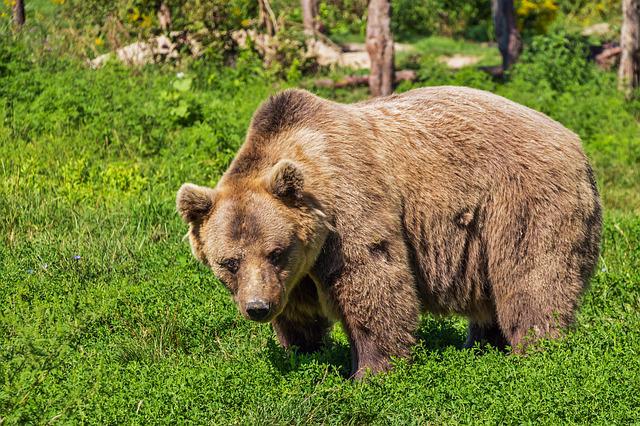Brown bears are omnivores, their diet consists mainly of Animals and vegation. A Brown bear can eat 80 to 90 pounds of food. They typically eat things that are easy to kill, like small mammals, birds, and insects. Also known to eat, berries, flowers, grasses, herbs, and roots.


